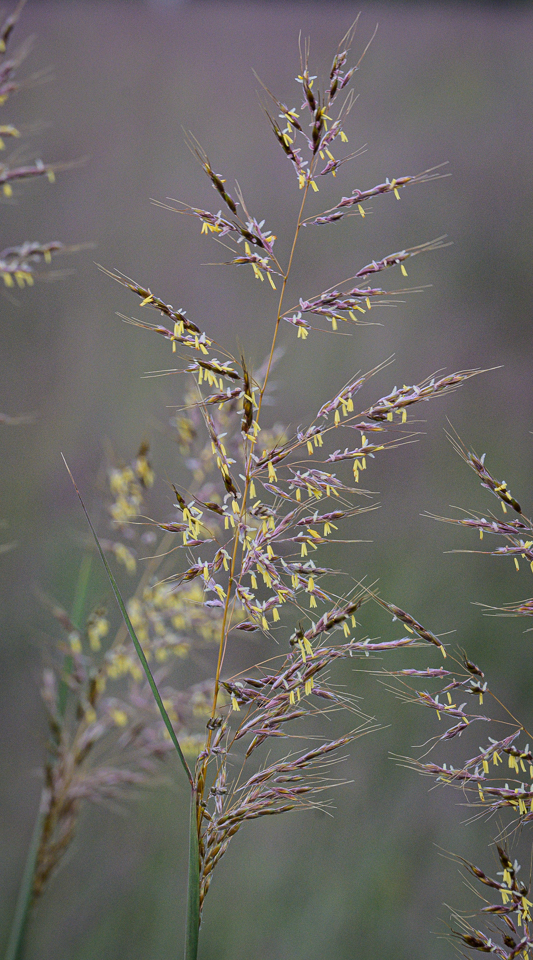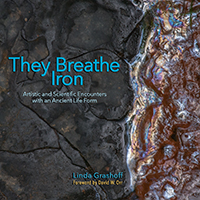Walking the Monastery Grounds
September 4, 2022
A few weeks ago my husband and I visited my daughter and daughter-in-law in Madison, Wisconsin. This year our Wisconsinites took us to the walking trail of the nearby Holy Wisdom Monastery. We started in a woodsy area, travelled through terrain more like a meadow with trees, and finally came to the prairie.
1 Wild cucumber was in flower just outside the path through the woods. In a near-repeat of my last major outing, none of my photos taken in the woods was worth sharing.
2 I thought this might be a fruit tree because of how it was pruned, but my resident botanist said he wouldn’t go that far. He had no idea what kind of tree it was.
2′ For Mic.
3 We saw many birches like this one on the grounds.
4 These weeping willows seem a long way from Lost Lake, the glacial lake you can see in the background, so they must have a good source of water beneath them.
5 A few of the willows were gigantic.
6 This one had polypore fungus (maybe Laetiporus sulphureus) growing on it.
7 Seeing this elderberry bush from afar, I thought the red parts were flowers. Instead, they are the structures that bore the flowers and now hang on to a few berries the birds have missed.
8 When we came to the prairie, the sky looked, ah, interesting. But we didn’t get any rain or even wind.
9 I was astounded by the variety of plants in the prairie.
10 Most abundant, perhaps, was the grass called big bluestem (Andropogon gerardii).
11 Big bluestem is also known as tall bluestem, bluejoint, and turkeyfoot.
12 Big bluestem was growing throughout the prairie among plants whose names were unknown to my botanist husband.
13 The yellow flower is “some kind of composite,” he says.
14 David knew this white flower as a baptisia. It’s also called false indigo, false lupine, or redneck lupine.
15 I’d never seen many of the plants in the monastery prairie even though many, like this cup plant (Silphium perfoliatum), are said to be found in Ohio as well as the five states (Michigan, Pennsylvania, West Virginia, Kentucky, and Indiana) that border Ohio.
16 This purple-flowered plant is another one whose identity stumped David.
17 This purple-flowered plant, clearly related to the one in #16, was equally baffling.
18 Here’s another stumper. “I really don’t know that much about prairie plants,” David had to admit.
19 Pretty much everyone might agree that this is a grass. But which?
20 Same for this one . . .
21 If this is Hill’s thistle (Cirsium hillii), it is a Wisconsin Threatened and Federal Species of Concern plant. How nice that many specimens were flourishing at the monastery.























Fine walk and fine set of photo’s. Nr11 and 12 are somehow favorite. 🙂
LikeLiked by 1 person
September 4, 2022 at 5:45 AM
Thanks, Harrie. The bluestem grass, shown in those two photos, is now my favorite grass.
LikeLike
September 4, 2022 at 7:27 PM
Love the bluestem grass and the thistle! Great walk you had.
LikeLiked by 1 person
September 4, 2022 at 6:51 AM
Thank you, Sue. I love the bluestem grass and thistle, too. It was a great walk. And I’ll bet it’s a good walk any time of year.
LikeLiked by 1 person
September 4, 2022 at 7:28 PM
Good to hear!
LikeLiked by 1 person
September 5, 2022 at 3:31 AM
That polypore fungus sure is an eye-grabber. In #17 the wildflower appears to be a verbena. Have you hit on a reason for not getting good pictures in the woods twice in a row?
LikeLiked by 1 person
September 4, 2022 at 7:14 AM
If that mushroom is Laetiporus sulphureus, it’s a little surprising that no one cut it down to eat when it was still yellow. Lucky us to see it unmolested. David says he can’t go that far to call the plant in #17 a verbena; there are too many other things it could be, he says. As for not getting good photos in the woods, I’m going with what Alex wrote in the comments to the first post about Sheldon Marsh: “[W]oodlands aren’t easy to photograph with all the chaos and complexity and clutter alone, and then on a sunny day too (extreme contrast range).” I’m feeling forgiven, though I’ll probably keep trying.
LikeLike
September 4, 2022 at 7:29 PM
I remember seeing many of these plants when I lived in MN, especially the bluestem which is one of my favorites, Nice portfolio, Linda. Can I borrow your husband next time I go to the arboretum?
LikeLiked by 1 person
September 4, 2022 at 7:37 AM
Thanks, Ken. Yes, you may borrow him whenever you like as long as you borrow me at the same time. Happy to share appreciation of bluestem with you.
LikeLike
September 4, 2022 at 7:30 PM
I think #17 is a kind of Blue Porterweed, stachytarpheta jamaicensis. While it grows in zones 8 to 11, who knows? Plants are changing. I loved the variety of the prairie plants, too. Thank you and good Labor Day Holiday Sunday 🙂
LikeLiked by 1 person
September 4, 2022 at 8:40 AM
Well, Kathy, David says it can’t be Stachytarpheta jamaicensis (because that’s a tropical plant), but he doesn’t rule out a related species in the Stachytarpheta genus. I wonder if we’ll ever know. Hope you’re having a good Labor Day Holiday Sunday, too. (Ours is fine, though cloudy.)
LikeLike
September 4, 2022 at 7:33 PM
These are beautiful — I have read about prairie grasses, and one of my botany teachers was working on Big Bluestem, but I didn’t do much to learn all of them. thank you for the catalog.
LikeLiked by 1 person
September 4, 2022 at 1:52 PM
Thank you, Mary Ellyn. I’m just sorry this catalog is so incomplete. But mystery has its own charms.
LikeLiked by 1 person
September 4, 2022 at 7:33 PM
I’m with Steve – a Verbena. Not being a botanist, I’ll ignore the fact that there could be other look-alikes.
So many lovely plants! I was struck by your reaction about “the variety of plants” in the prairie, which as you know, is an ecosystem largely destroyed because of agriculture. You’re lucky to have enjoyed this place; thank you for sharing it. The Polypore is wonderful! 🙂 The elderberry’s very nice, too. Thank you for including the blurred bird – that’s a happy thing to see. (A Barn swallow, I think!). #12 Bluestem could be my favorite for the way it encapsulates what a field in summer is all about. I’m not familiar with the Cup plant but I assume its leaves surround the stalk, a trait that I always love to see in plants (perfoliatum). The #20 flowering grass is terrific to see – a lot of those little grass flowers react to every passing breeze and are hard to capture.
LikeLiked by 1 person
September 5, 2022 at 6:01 PM
I think there is a trend to reestablish prairies, at least on a small scale. I hope so. I’m glad you approve of the blurred bird. It is indeed a swallow. I took a bunch of photos of the swallows swooping over this part of the prairie, and this was the least blurry of them. I guess I needed to shoot faster than 1/125th of a second to get less blur. You can see the cup in the cup plant more easily on the link. I’m curious: Did you click on the link to “birches”? Or “weeping willow”? Thanks for all your comments, Lynn.
LikeLike
September 6, 2022 at 1:03 PM
Link? I was too inundated with things at the time to follow links. Just now I checked the Willow link and saw that wonderful Billie Holliday song – I had a very old, well-loved 33rpm of that and some others back in the day. And the birches poem! I don’t think I’ve ever read it, though it must be well known. Wow, it’s breathtaking. I had assumed the links were fact-based wiki-type links. Glad you asked.
You know, wildlife photographers with humongous lenses always shoot in burst mode. Every time I have a wildlife encounter I fail to remember where that is on my camera until it’s too late. Blurred is more poetic, I like it.
(BTW, I also enjoyed the two Mic mentioned, for the same reasons).
LikeLiked by 1 person
September 6, 2022 at 1:35 PM
I don’t imagine many people clicked on those links, and I was hoping I’d have a chance to call someone’s attention to them. Thanks for that chance. I don’t think I’ve ever used my camera’s burst mode—for the same reason.
LikeLiked by 1 person
September 6, 2022 at 2:00 PM
This is a very enjoyable collection, Linda, for all the many reasons already stated by others. I would cast a vote for the tree in #2 for its wonderful wandering shape and for #4 because it is such an inviting scene with the prairie grasses and flowers in the shade of the willows blowing in a gentle breeze, looking out over the lake in the distance. All nicely captured.
LikeLiked by 1 person
September 5, 2022 at 7:38 PM
Thanks, Mic. As you may have noticed, I don’t often take photos with the amount of depth shown in #4, so I’m glad you noticed. And just because it’s you I’m replying to, I took a look at #2 as a black and while image. See what you think. I’ll add it to the collection above as #2′.
LikeLiked by 1 person
September 6, 2022 at 1:11 PM
I like it! It seems as if the smaller branches up in the tree are emphasized more in the black and white. Thank you.
LikeLiked by 1 person
September 6, 2022 at 2:08 PM
You’re welcome, Mic. I hoped you’d like it.
LikeLiked by 1 person
September 6, 2022 at 2:10 PM
Absolutely lovely. Such beautiful places to walk. and such interesting plants.
LikeLiked by 1 person
September 6, 2022 at 1:22 AM
Thank you, Jessica. I agree. Wish I could go there more often.
LikeLiked by 1 person
September 6, 2022 at 12:42 PM